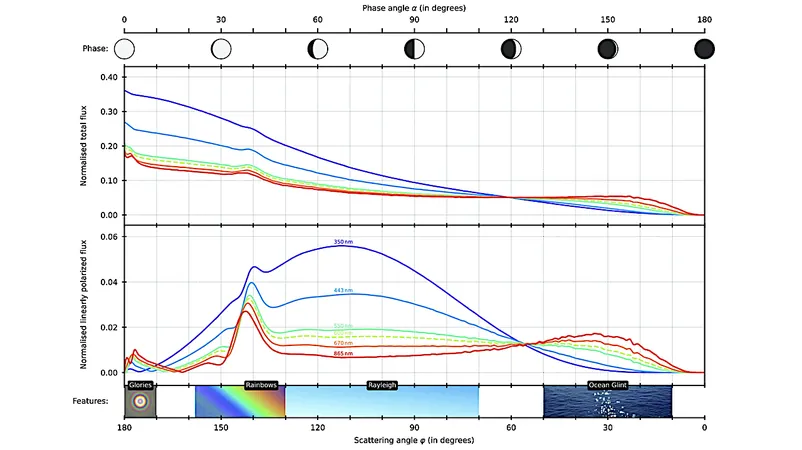
The Hidden Link Between Vaginal Microecology and HPV Infection: A Comprehensive Study Reveals Startling Insights
2024-10-30
Author: Rajesh
Introduction
Human papillomavirus (HPV) is known for its widespread infectivity, particularly high-risk HPV (HR-HPV), which poses a significant threat as a leading cause of cervical precancerous lesions and cancer. When HPV infects the body, it predominantly replicates in the basal cells of mature epithelial tissue. If the immune system falters, the virus can integrate into the host's genome, leading to potentially harmful mutations. Prevention strategies focus on avoiding HPV infection, early detection, and receiving timely treatment.
Significantly, recent research suggests a link between HR-HPV infection and an imbalance in vaginal microecology. This microecology consists of a delicate balance of microorganisms within the vagina, primarily dominated by beneficial lactobacilli. A healthy vaginal environment supports the body's defenses against pathogens, while any disruption can lead to infections and increase susceptibility to diseases, including those caused by HR-HPV.
Research Purpose
The lack of substantial studies investigating the correlation between HR-HPV infection and vaginal microecology, particularly in China, motivated this study. By examining changes in vaginal microecology in relation to HR-HPV infection, the aim was to establish a predictive model to better understand this complex relationship and provide a basis for future prevention efforts.
Methodology
The study enrolled 2,000 women of childbearing age who underwent both vaginal microbiota and cervical HPV testing at Xiangyang Hospital from March 2022 to March 2023. Participants were selected based on specific inclusion and exclusion criteria to ensure accurate and reliable data. The ethics committee approved the research study, ensuring adherence to ethical norms.
After careful collection and testing of samples focusing on microbial flora and HPV presence, researchers employed various diagnostic methods, including Gram staining and polymerase chain reaction (PCR), to assess the vaginal microecology and identify HR-HPV infections.
Key Findings
The research unveiled crucial links between vaginal microecology and HR-HPV infection risk:
1. Microecological Imbalance: Significant differences in the presence of lactobacilli and other bacteria were observed between HPV positive and negative groups, highlighting an absence of beneficial bacteria as a risk factor for infection.
2. Logistic Regression Model: The study constructed a logistic regression prediction model based on various influential factors (bacterial vaginitis, aerobic vaginitis, and lactobacillus deficiency) to predict HR-HPV infection risk. The model exhibited a high area under the curve (AUC) value, indicating strong predictive performance.
3. Bacterial Infections: The correlation between bacterial vaginitis and aerobic vaginitis with HR-HPV infection was notably established. Higher incidences of these conditions were present in individuals with HR-HPV, reinforcing the link between compromised vaginal health and increased infection risk.
Conclusion
This groundbreaking study sheds light on the intricate relationship between vaginal microecology and HR-HPV infection. It underscores the necessity of maintaining a balanced vaginal microbiome, particularly the role of lactobacilli, to enhance resistance to HPV and potentially prevent cervical cancer.
Healthcare providers should focus on effective treatment for vaginitis and encourage vaginal microbiome regulation to decrease HPV infection risk. The logistic regression model demonstrated in this study holds promise for future clinical applications, potentially revolutionizing preventive strategies in gynecological health.
Final Thoughts
With over 600,000 new cervical cancer cases globally each year, understanding how vaginal health impacts HPV infection status could lead to more effective preventative measures. As ongoing research strives to deepen our understanding, it becomes ever more critical to focus on women's reproductive health, ensuring they are equipped with the knowledge and resources to protect themselves against HPV and its consequences. Stay informed, stay safe!




 Brasil (PT)
Brasil (PT)
 Canada (EN)
Canada (EN)
 Chile (ES)
Chile (ES)
 Česko (CS)
Česko (CS)
 대한민국 (KO)
대한민국 (KO)
 España (ES)
España (ES)
 France (FR)
France (FR)
 Hong Kong (EN)
Hong Kong (EN)
 Italia (IT)
Italia (IT)
 日本 (JA)
日本 (JA)
 Magyarország (HU)
Magyarország (HU)
 Norge (NO)
Norge (NO)
 Polska (PL)
Polska (PL)
 Schweiz (DE)
Schweiz (DE)
 Singapore (EN)
Singapore (EN)
 Sverige (SV)
Sverige (SV)
 Suomi (FI)
Suomi (FI)
 Türkiye (TR)
Türkiye (TR)
 الإمارات العربية المتحدة (AR)
الإمارات العربية المتحدة (AR)